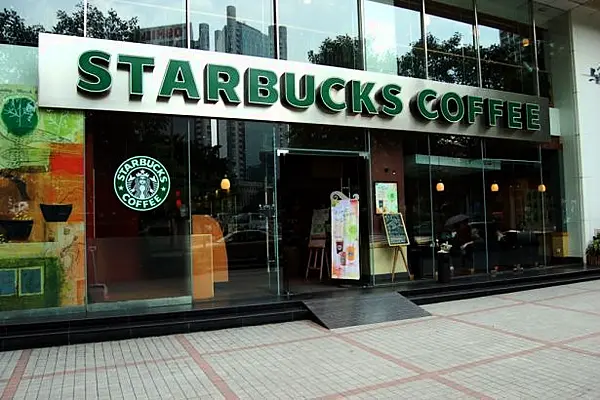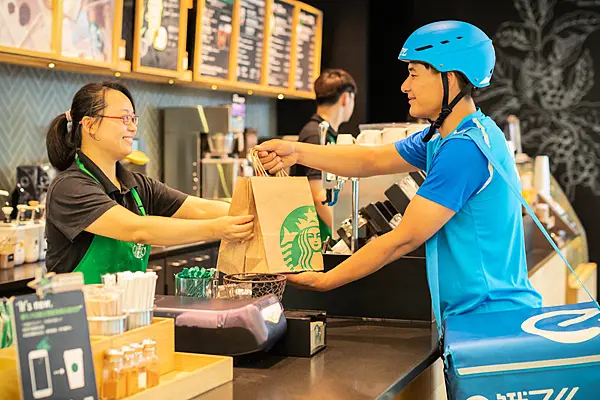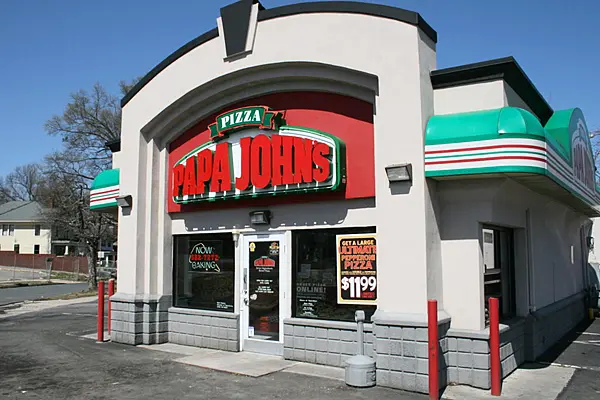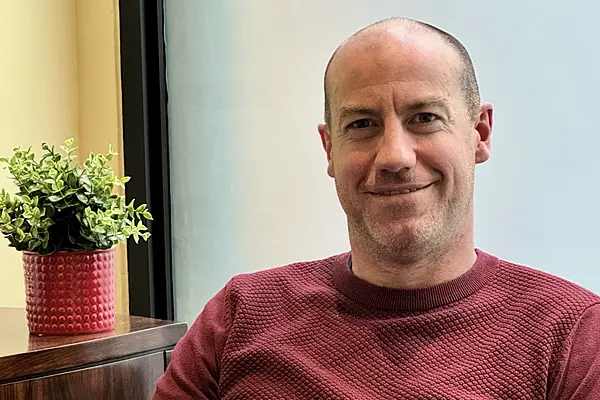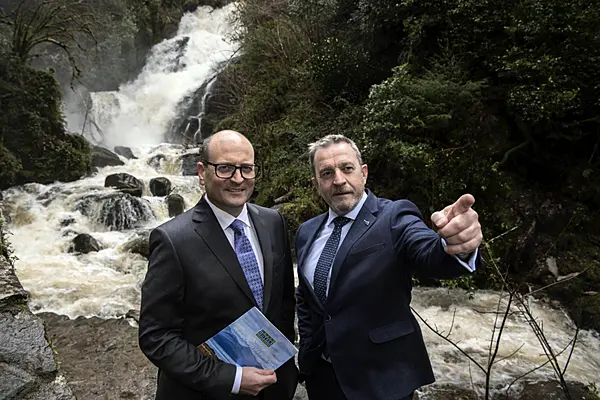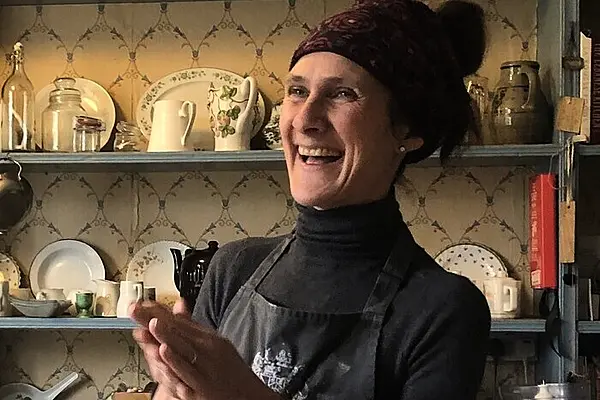Italy, home of the world’s most sophisticated espresso drinkers, will get its first taste of Starbucks coffee shops next year. They will look very familiar to the locals.
On a recent afternoon in Milan, all four floors of the flagship store of the Italian chain Arnold Coffee were jammed with university students and young professionals wired into laptops, tablets and smartphones. Most were sipping from plastic cups embossed with the chain’s motto: “The American Coffee Experience.”
Matteo Mattei, a 23-year-old student at Milan’s Bocconi University, was among the customers at the shop, which offers American breakfast staples like donuts and bagels as well as brownies, cupcakes, apple pie and “Oreo Cookie Bash Cake.” The coffees range from single-shot espresso to White Caffe Mocha to Cinnamon Caffe Latte.
“The experience at the traditional Italian bar, downing an espresso in two seconds, isn’t what I’m looking for,” said Mattei as he drank an iced coffee in a paper cup, a tablet computer at his side to profit from the free high-speed Wi-Fi. “I need a place like this to study or meet friends or just relax.”
Espresso bars have long been at the center of community life for most Italians, who make it a daily ritual to sip - usually standing up - a short shot of espresso or cappuccino as they discuss topics ranging from politics to soccer. Starbucks Chief Executive Officer Howard Schultz, who took his inspiration from this very culture, waited more than three decades to challenge it as the chain opened in what came to be 73 countries around the world.
When Starbucks opens its first store next year in Milan, Italy’s business and fashion capital, the global giant will be challenged by smaller chains such as Arnold and Italian coffeemaker Illy that are already capturing consumers who are breaking with heritage.
“Traditional coffee shops still dominate in Italy, but there’s so much evidence that the new era of coffee culture is part of today’s world,” says Jeffrey Young, founder and managing director of London-based consumer research firm Allegra Group.
There’s room for growth: Allegra’s research shows Italy ranks 20th in Europe in terms of branded coffee shops per million people, with Ireland and the U.K. holding the top two spots, according to data as of October 2015. There are 11 outlets per million people in Italy, compared with 114 in Ireland and 99 in the U.K.
"We know that we are going to face a unique challenge with the opening of the first Starbucks store in Italy, the country of coffee" -Antonio Percassi, president of Starbucks's local partner
Antonio Baravalle, chief executive officer of Luigi Lavazza SpA, Italy’s biggest coffee maker, says the market is ready for alternative coffee products in addition to the classic ones. “The way coffee is consumed in Italy has changed,” said Baravalle, whose company announced the completion of its purchase of French coffee brand Carte Noire in March. “I welcome Starbucks to Italy.”
In 1983 Schultz traveled to Milan and Verona and became so enthralled with the country’s espresso bars that he decided to build an international coffee-shop chain. “Starbucks history is directly linked to the way the Italians created and executed the perfect shot of espresso,” Schultz said in Starbucks’ Feb. 28 announcement on the Milan opening.
The company intends to tailor its menu to the Italian customer. "Espresso will certainly be the star of the show,'' said Kris Engskov, president of Starbucks Europe, Middle East and Africa, this week. The food and milk will be locally sourced from Italian kitchens, artisans and dairy farmers. An unspecified number of outlets will follow across the country after the Milan opening.
“We know that we are going to face a unique challenge with the opening of the first Starbucks store in Italy, the country of coffee, and we are confident that Italian people are ready to live the Starbucks experience,'' said Antonio Percassi, president of Italian retail group Percassi, which will be the licensee and operate the stores, on the occasion of the Feb. 28 announcement.
Some defenders of traditional Italian coffee consumption aren’t worried about the incursion of chains such as Starbucks. “Italians will not buy a double espresso in a paper cup for five euros,” says Domenico Brescia, a 44-year-old barman at the Lunch Cafe near Rome’s popular shopping street, Via Del Corso. In a sign that it needs to cater to younger customers, the bar also offers free Wi-Fi. “Starbucks could be successful here, but it will have to adopt an Italian style -- proper espresso cups and prices.”
Illy, whose founder, Francesco Illy, developed the modern espresso machine in 1933, is also seeking to take advantage of the changing culture. Last year it opened 29 Illy Caffes and Illy Shops and is planning additional ones this year in major cities around the world.
Alfio Bardolla, the businessman who founded the Arnold chain, expects Starbucks to be successful in Italy because “the market is there, juice bars and coffee houses are growing.” In an interview at his flagship coffee shop, a couple of blocks from the city’s landmark cathedral, Il Duomo, Bardolla said he was confident about his business prospects. His company is planning to expand the chain from the current four stores to about 30 in the next three years and to go public in 2018.
“Everybody wants a different type of coffee now in Italy, plus traditional Italian bars tend to kick people out after 15 minutes,” he said. The biggest challenge facing Starbucks, he says, will be dealing with Italian bureaucracy, citing his own struggles over permits and locations. “It’s probably easier for Starbucks to open 500 outlets in China than a few in Italy.”
News by Bloomberg, edited by Hospitiality Ireland
